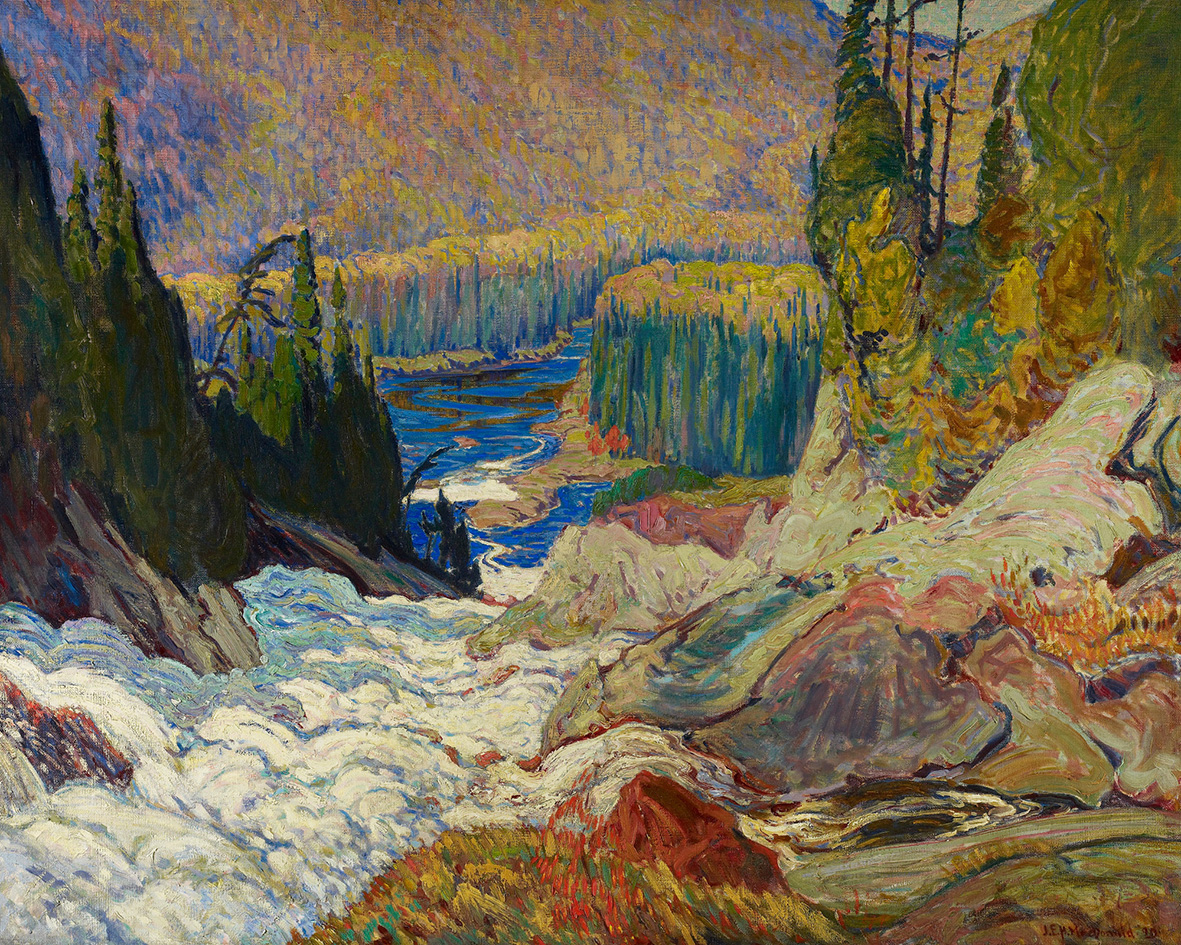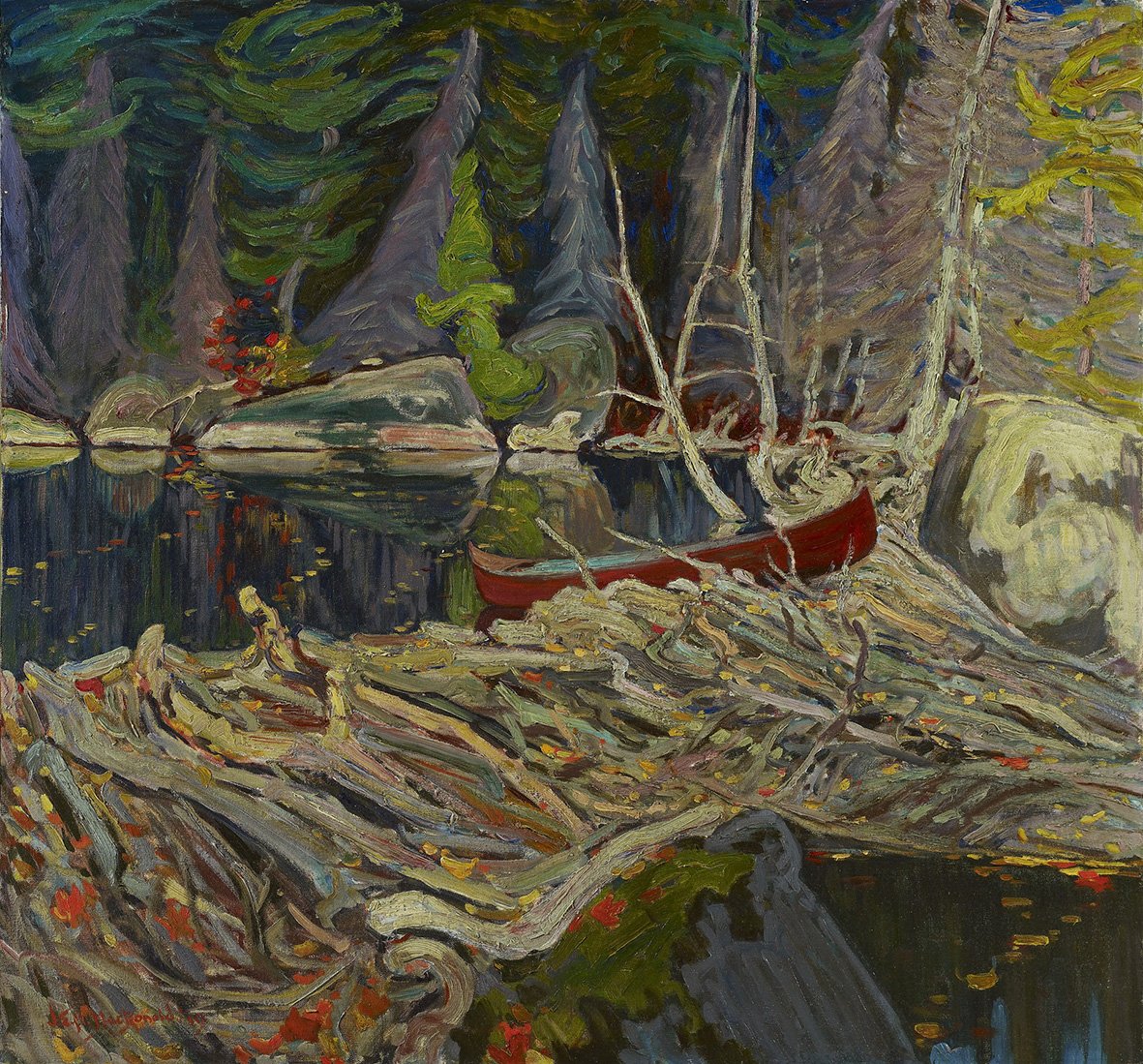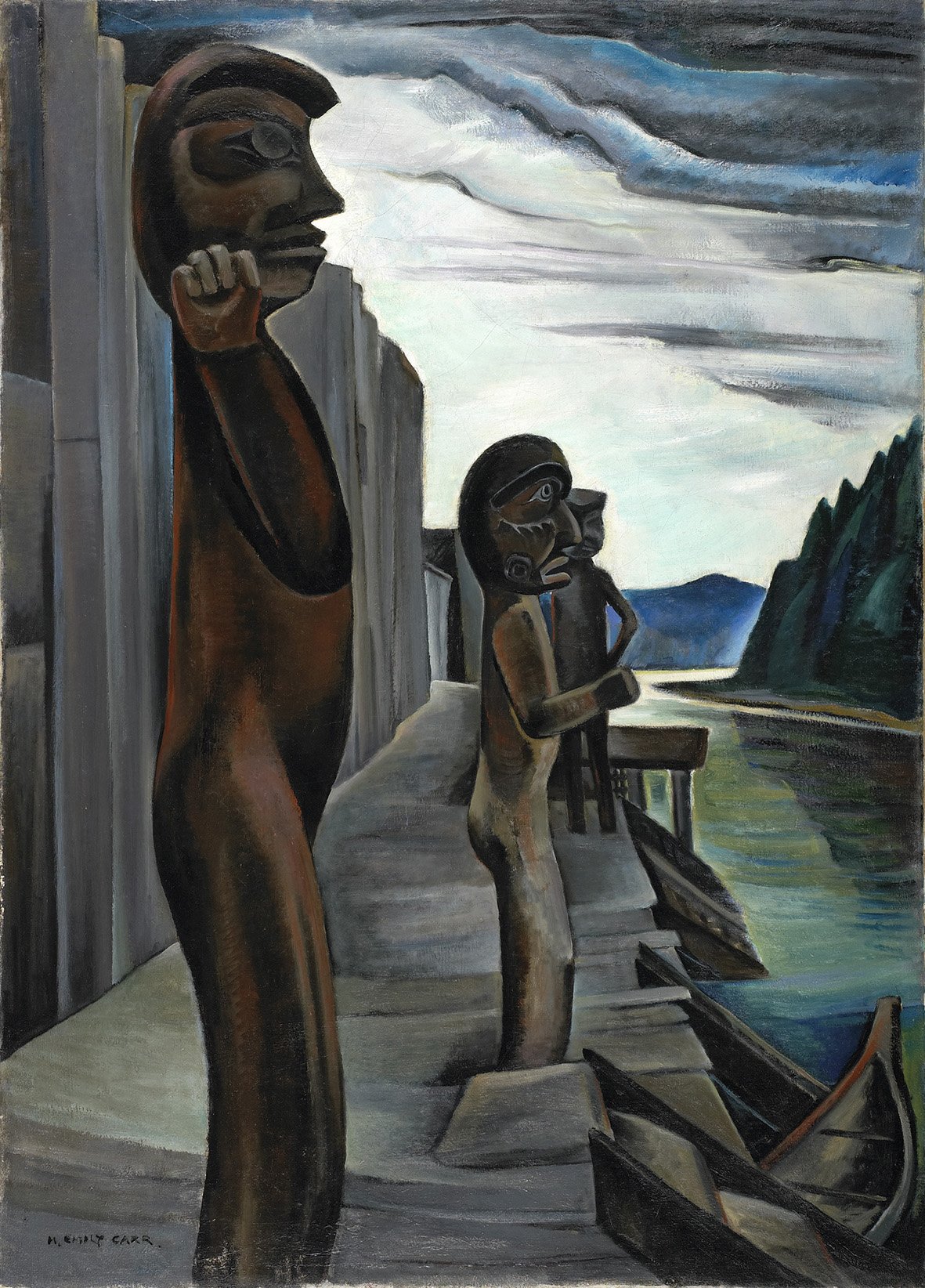The exhibition is a collaboration between Kunsthal Rotterdam and the National Gallery of Canada in Ottawa, the Art Gallery of Ontario in Toronto, and the Schirn Kunsthalle Frankfurt. For the first time ever, the most important works from major Canadian collections, including Mt. Lefroy (1930) by Lawren Harris, and Terre Sauvage (1913) by A.Y. Jackson, will now be shown in Rotterdam.
In the period between 1910 and 1940, the artists connected to the Group of Seven were in search of a new, Canadian visual language. Driven by a longing for creative experimentation, in the early twentieth century artists like Franklin Carmichael, Emily Carr, J. E. H. MacDonald, Lawren Harris, Edwin Holgate, Arthur Lismer, Tom Thomson, and F. H. Varley left the cities to venture deep into the Canadian landscape. Their works are characterised by bold compositions, expressive brushwork, and powerful colours, and proved to be seminal for the subsequent development of Canadian painting.
The Canadian modernists were united in their goal to capture the beauty, grandeur, and ‘photogenic’ qualities of the country in order to strengthen the young nation in its formation of a coherent identity. The country, which was founded as a confederation in 1867, was formed by a long history of French and English colonial occupation. But before the first European settlers started claiming the territories from the 16th century, they had already been inhabited by Indigenous peoples for millennia.
Emily Carr
The artists of and around the Group of Seven were mainly focused on depicting the beauty of nature, their canvases filled with majestic rivers and vast forests. They created a romantic image of an unspoilt wilderness, thereby ignoring the rapid growth of the population, industrialisation, and above all the Indigenous peoples who were left out of the frame. An exception to this rule is the work of the artist Emily Carr from British Columbia, who became acquainted with the group in 1927. She is not just known for the many landscapes she painted, but also for the attention she paid to the Indigenous communities of Canada in her early work, and for the fact that she was interested in the preservation of Indigenous cultures. Today, Carr is also regarded from a critical perspective, as she reduced the culture of the Kwakwaka’wakw to a stereotype in her work.
Land and landscape
Over the course of the decolonisation process, critical voices have become more insistent. They are opposed to the portrayal of Canada as an unspoilt country, and to the appropriation of Indigenous culture. The aesthetically organised landscape – experienced as sublime, picturesque, or Romantic – is, at its core, a European concept. So too is the notion of owning or ruling over land. This is countered by the Indigenous worldview of inseparable attachment to, and kinship with the land and all nonhuman forms of life. In the words of Caroline Monnet: “The land is at the root of all our relations.” Kunsthal is showing Monnet’s 2015 film collage Mobilize for which she used archival material to address questions of identity and representation with regard to the First Nations, the country’s Indigenous communities. In the 2013 documentary How a People Live, Lisa Jackson examines the colonial traumas of these communities. Based on interviews and historical footage, Jackson has documented the history and consequences of the forced resettlement of the Gwa’sala and Nakwxda’xw nations.
Catalogue
The English-language catalogue Magnetic North. Imagining Canada in Painting 1910-1940 will accompany the exhibition. The book is edited by Martina Weinhart and Georgiana Uhlyarik and includes essays and articles by, among others, Jeff Thomas, Ruth Phillips, and Carmen Robertson. Published by Prestel, €49, ISBN 978-3-7913-5994-6, 235 pages.
31 October 2021 -
7 November 2021
As a special accompaniment to this exhibition, the Kunsthal will organise a programme with talks, tours and workshops on two consecutive Sundays: 30 October and 7 November.
SIGN UP NOW!






















